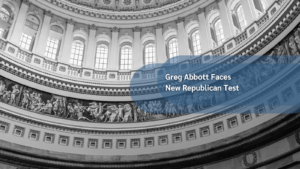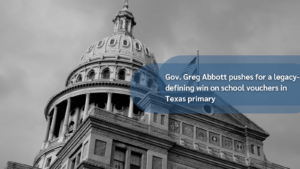By JOHN D. COLYANDRO/For The Lufkin News Jan 31, 2017
Mary Ann Whiteker, superintendent of Hudson ISD, makes a number of arguments about the motives
of school choice opponents in a Jan. 18 piece for The Lufkin News, suggesting that choice advocates
want to “dismantle public education” and that school choice means “closing doors on public education.”
The superintendent certainly knows that the Texas Constitution mandates “an efficient system of
public free schools” and the Legislature is committed to meeting that mandate. Furthermore, in the
dozens of other states that have school choice programs, including private school choice, traditional
public schools remain open and generously funded. The same would be true in Texas.
Superintendent Whiteker’s piece largely highlights onerous testing and accountability requirements
for public school districts and schools. She will receive little disagreement. However, a system in which
students are forced to attend a school based on geography alone should provide parents with some
kind of metric from which to determine how well their children are being served. Those ratings and
accountability measures mean little if parents have no material alternatives for their children. Perhaps
that is why representatives of public systems resist school choice so forcefully despite contrary
evidence.
To start, school choice helps public schools. EdChoice has examined the existing literature on school
choice in “A Win-Win Solution: The Empirical Evidence on School Choice” (last updated May
2016).Thirty-one out of 33 studies looking at the impact school choice programs have on public schools
found that “the competitive effects driven by school choice programs led to improvement in public
schools’ academic performance.”
She also claims, without evidence, that school choice “is state-funded segregation.” Again, the facts are
at odds with that assertion. “A Win-Win Solution” identifies 10 empirical studies that have looked
directly at the question of racial segregation in school choice programs. Eight of those 10 studies found
that choice programs actually decrease segregation by moving students from more segregated public
schools to less segregated private schools. This makes sense considering that private schools have the
luxury of valuing diversity in the student body where public schools cannot because their populations
are based solely on geographic boundaries.
Superintendent Whiteker’s other assertions reveal a fundamental misunderstanding of what school
choice is about. The goal is not “tax savings.” Nor is it an effort to “relinquish the state’s responsibility
for providing quality education,” which is an important constitutional obligation. Her last point that
“public schools are not failing,” is untrue. Of 9,880 graded schools in Texas, 1,694 graded a D in at least
one of the four grading categories, and 1,206 graded an F in at least one category. But even that misses
the point. True, there are good schools and bad schools, but it is folly to believe that the public school
system can serve the needs of every student in Texas — well in excess of 5 million of them and growing
rapidly every year. All children are unique, with individual needs that have to be met in different ways.
The point is to empower parents with options that best meet the needs of their children if a traditional
public school cannot.
Programs like education savings accounts (ESAs) provide a remedy by allowing parents to receive a
portion of funding that would otherwise be spent on their child, and find an alternative education that
more directly fits their needs. ESAs have been proven to lower those financial barriers.
A 2016 study released by Harvard University showed that voucher recipients who attended private
school are more likely to graduate from college. Minority students in the group were 10 percent more
likely to enroll in college than the control group (students who stayed in public schools) and 35 percent
more likely to obtain a bachelor’s degree. The Harvard study is but one among many that
overwhelmingly demonstrate positive results from choice programs, both to participants and the
public schools they left. As EdChoice highlights: “the research consensus in favor of school choice as a general policy is clear and consistent.” If the overarching mission is to best serve children, giving
parents the option to choose a different school should be encouraged by every educator and
administrator.
John D. Colyandro is Executive Director and Russell H. Withers is General Counsel at the Texas ConservativeCoalition Research Institute, a public policy organization based in Austin.
Source: The Lufkin News



